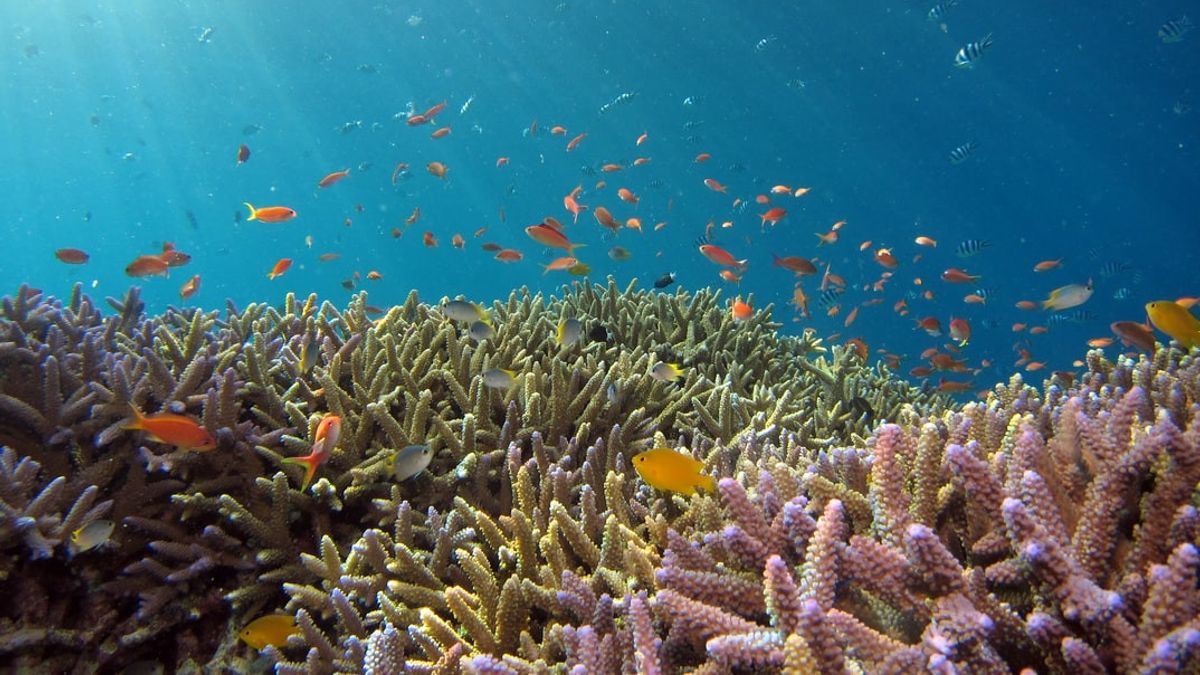JAKARTA - A new study shows how machine learning can make humans listen to fish and reveal how the environment affects them.
Researcher Jill Munger first heard of fish making sounds when she was a student.
"I can spy on the creatures in the ocean, without disturbing them. When you're a diver, you're disturbing the wildlife while you're swimming, so you can't see what's not there," said Munger, who is currently an ecologist. ocean at Oregon State University.
Munger was given a hard drive with 18,000 hours of sound from a 12-station hydrophone area managed by NOAA and the National Park Service in American Samoa. An amount of data that seems impossible to sort through.
"It's like if someone gave you a mixtape for a week, you'd never hear it all," Munger said.
Then, he uses software that creates a spectrogram, which is a visual reading of noise. Some sounds are easy to identify, such as a whale call. But there was another sound that was completely foreign.
"It's really almost like a puzzle to figure out what the different sounds are," Munger said.
Some parts are noisy, like the wind, and others like old recordings dominated by the snapping sound of prawns. Finally, he decided that it came from the fish.
He can choose the time when the fish gather together and make calls, that is, morning and evening, like a chorus. There was one voice that made Munger excited. The call of the damselfish reminded him like a purring cat.
"For me, (fish calling) is very different and full of personality," Munger said. He adds that damselfish make this particular sound by bringing their pharyngeal teeth together and amplifying sound through their air sacs.
Munger is not alone, he is with someone to help with his research.
Despite all the interesting noise on the hard drive, Munger knew he would never be able to sift through all the data himself. So, he enlisted the help of his older brother, Daniel Herrera, a machine learning engineer.
Herrera wrote the code and together they trained the model. Their findings have been published in the journal Marine Ecology Progress Series.
Machine learning samples or training data cover 400 to 500 damselfish calls. With that start, Herrera built a machine learning model that accurately identified 94 percent of damselfish calls.
Research can be delayed because it is difficult to analyze large amounts of data efficiently, but systems like these can be a game changer.
In addition to Munger and her sister, a researcher at the Cooperative Institute for Research in Environmental Sciences at the University of Colorado Boulder, who were not involved in the new paper, Carrie Bell is also conducting similar research using machine learning.
“When you start introducing algorithms and approaches like machine learning and artificial intelligence and deep learning, you can build things that are smarter and much more efficient to go through large amounts of data,” explains Bell.
Beyond simple identification, Bell says this method can reveal clues about ecosystem health. Because fish calls change with environmental conditions such as wind speed, water temperature, tidal amplitude, and sound pressure level, noise itself can be an indicator of how ecosystems operate, especially in oceans that are experiencing rapidly changing climates.
This machine learning approach has been used in analyzing humpback calls, but not in the fish world. In addition to Munger's favorite snoring, Bell says in his research that he hears fish, but he's still not sure which species makes the mooing sound, and other mysterious sounds that remind him of a jet ski.
"The unknown is what interests me the most, because it's amazing that here we are, in 2022, and we've been able to understand the environment for decades, but there's still so much we haven't even explained," Bell said.
The English, Chinese, Japanese, Arabic, and French versions are automatically generated by the AI. So there may still be inaccuracies in translating, please always see Indonesian as our main language. (system supported by DigitalSiber.id)













